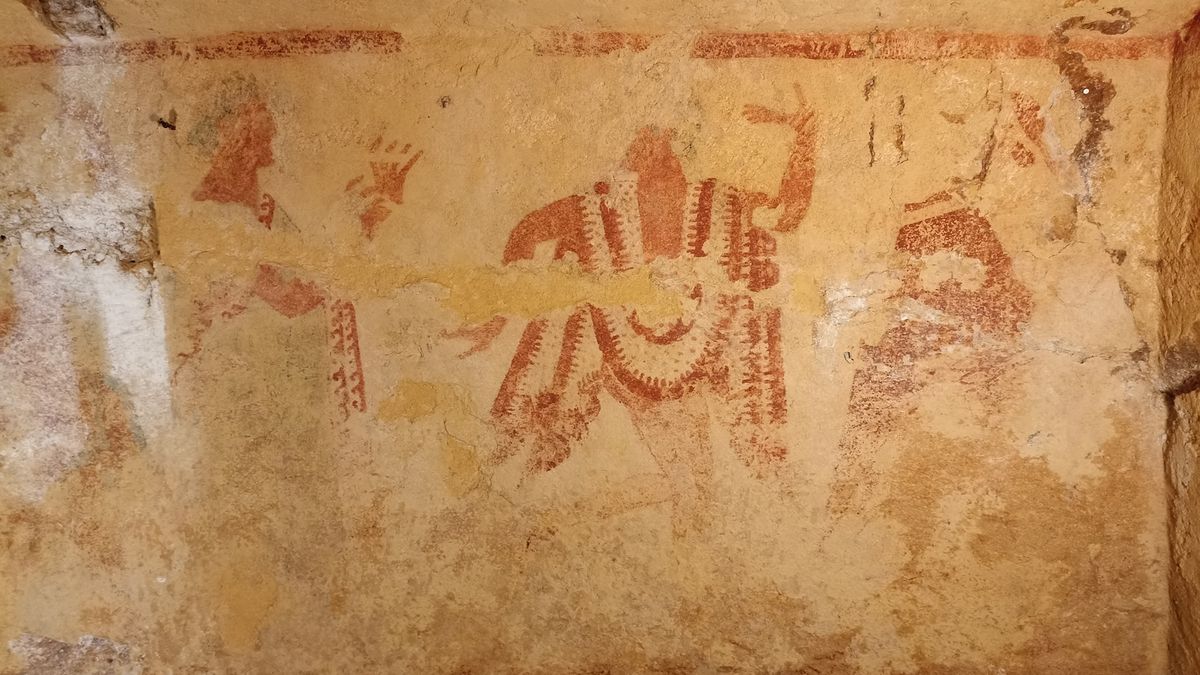A 2,500-year-old tomb decorated with bright-red wall paintings has been discovered at an ancient necropolis in Italy.
It was created by the Etruscans, a people who thrived in Italy during the middle of the first millennium B.C. but who were gradually conquered and assimilated by the Romans.
The tomb contains colorful wall paintings depicting a variety of scenes, such as men and women dancing beside a flutist, the Italian Ministry of Culture said in a translated statement. Another painting shows a woman, possibly the deceased, beside two young men, while another scene illustrates a metallurgical workshop.
The workshop painting suggests the deceased’s family were metalworkers. “The inclusion of a unique scene of smithy in the painted decoration of one wall allows us to have a glimpse of the economic sources of the wealth of this family, which was evidently involved in metal management business,” Daniele Federico Maras, director of the National Archaeological Museum of Florence and leader of the team that excavated the tomb, told Live Science in an email.
Related: Ancient Etruscans prayed at sacred hot springs, stunning statues reveal
The mural with the music and dance scene may depict the actual funeral of the deceased. Scenes like this “have been interpreted by scholars as referring to the ceremonies occurring at the funeral of the members of the family,” Maras said.
The lack of inscriptions, human remains and grave goods indicated that the tomb had been looted. And the tomb itself is in rough shape — it sits beneath another tomb that has already collapsed, the statement noted.
The tomb is located in the Tarquinia necropolis, about 45 miles (72 kilometers) northwest of Rome. “Around 6,500 tombs have been identified and classified at Tarquinia, and [about] 200 of them had painted decoration,” Maras said. “However, only several tens have figural decoration, with scenes including banqueting, dances, sports, myths and the underworld.”
The tomb was found in 2022 and was excavated and examined in detail recently. Analysis of the tomb is ongoing, and the team plans to use multispectral imaging technologies to examine the paintings and determine which colors have been lost, the statement said.


